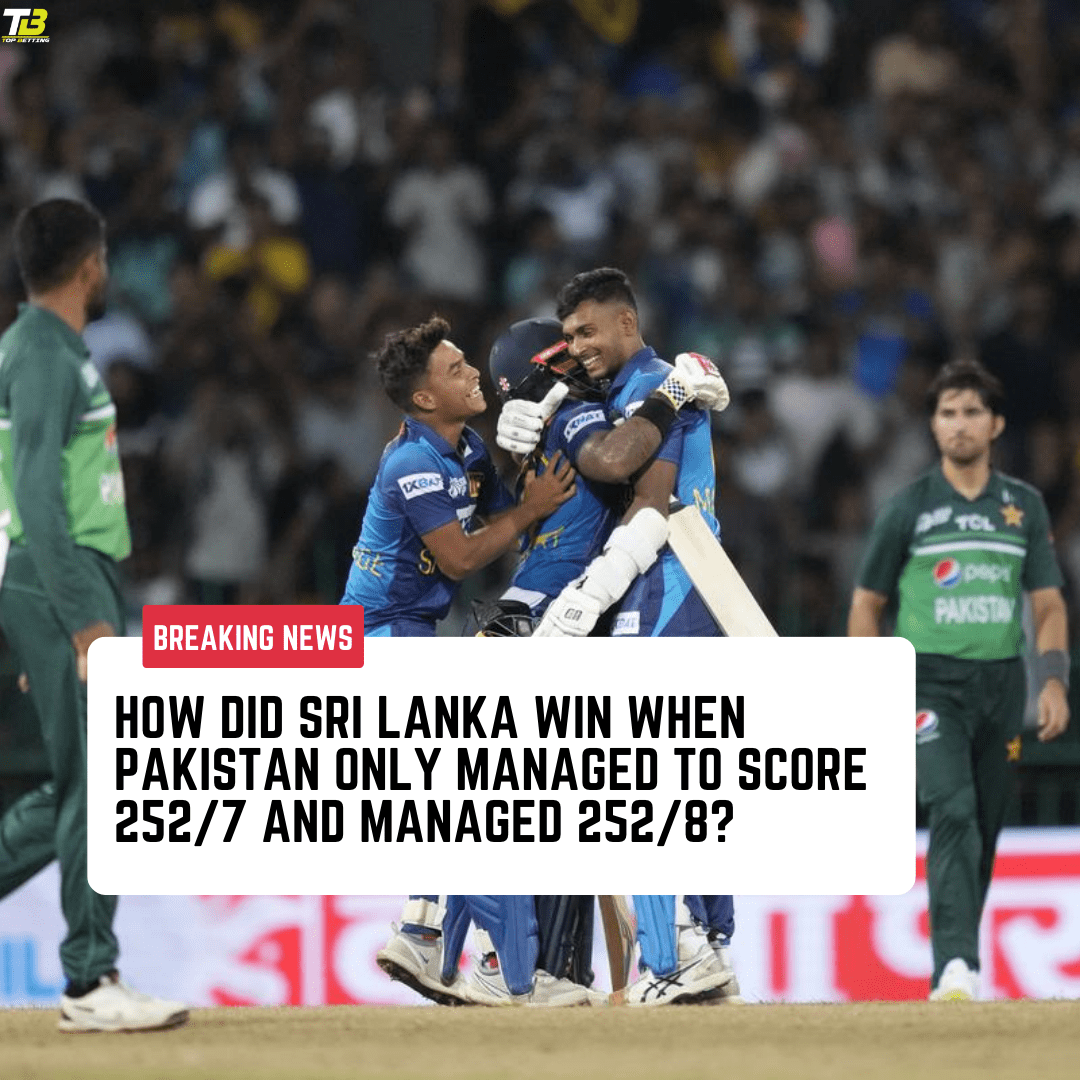

How did Sri Lanka win when Pakistan only managed to score 252/7 and managed 252/8? Explainer of the DLS regulation that altered the Asia Cup in full
In the annals of cricketing history, there are matches that stand out for their sheer drama, and the Pakistan vs. Sri Lanka Super 4 clash during the Asia Cup at the R Premadasa Stadium in Colombo was one such spectacle. The cricketing gods seemed to toy with the fans’ emotions as rain threatened to wash out the game on multiple occasions, but it didn’t. Instead, overs were deducted twice, first reducing it to a 45-over contest and then, tantalizingly, to a 42-over showdown.
Sri Lanka appeared to be in the driver’s seat before Pakistan’s late resurgence, thanks to the heroics of Iftikhar Ahmed and Shaheen Shah Afridi. It was a match that epitomized the essence of the sport, combining rain, drama, stunning performances, tension, and a thrilling seesaw battle.
Now, here’s the intriguing twist: Pakistan posted a respectable 252 for 7 in their allotted 42 overs, and Sri Lanka mirrored that score, finishing at 252 for 8 in the same number of overs. On the surface, it seemed like a textbook tie. However, cricket is never just what meets the eye. The DLS (Duckworth-Lewis-Stern) rule came into play, and that changed everything.
But why did Sri Lanka win when both teams finished with identical scores of 252 at the end of 42 overs? The answer lies in the peculiar workings of the DLS method.
The DLS Dilemma:
The match would have indeed ended in a tie if it were a standard 50-over contest, or even in this case, if it had been reduced to a 45-over game due to overs being deducted before the match began. The DLS rule would not have come into play at that point. However, the plot thickened after the second rain stoppage.
Pakistan had managed to reach 130 for 5 in 27.4 overs when the rain returned, forcing the players off the field once again. When play resumed, approximately 45 minutes later, three more overs were deducted from the match. This transformed it into a 42-over contest, and here’s where the DLS method entered the equation.
Thanks to the resilient efforts of Mohammad Rizwan (86* off 73) and Iftikhar Ahmed (47 off 40), Pakistan managed a commendable recovery, posting 252/7 in their allotted 42 overs. But due to the DLS method coming into play, Sri Lanka’s target was not the original 253. Instead, they were tasked with chasing 252. A single run was deducted from Pakistan’s total.
Why Was a Run Deducted from Pakistan’s Total?
You might wonder why Pakistan’s total was reduced by a solitary run when they still had three wickets in hand. Shouldn’t runs have been added to their total? Surprisingly, the number of wickets a side has left at the end of their innings is irrelevant in DLS calculations. What truly matters is the number of wickets lost before the rain interruption.
In this case, Pakistan had lost five wickets before the rain break, which proved to be their advantage. The deduction of three overs from their innings heavily influenced their final total, and the revised target for Sri Lanka was calculated based on this.
The Butterfly Effect of Wickets:
Now, let’s delve into the butterfly effect of wickets. If Mohammad Nawaz hadn’t been dismissed on the last ball before the rain break, Sri Lanka would have faced a target of 255 instead of 252. Similarly, had Pakistan lost fewer than four wickets, more runs would have been added to their final total. Conversely, if they had lost more than five wickets, more runs would have been deducted from their total. The DLS method is a complex mathematical system, and the number of wickets in hand before the rain stoppage plays a pivotal role in its calculations.
A Last-Over Thriller:


As the match hurtled towards its conclusion, Sri Lanka found themselves needing eight runs from the final over. In a nail-biting finish, Charith Asalanka emerged as the hero of the night. He kept his cool when two runs were required off the last ball, smashing it for a boundary to seal victory for the hosts, propelling them into the Asia Cup final.
The elation of the raucous home crowd contrasted with the disappointment of millions of fans worldwide who had been eagerly anticipating an India-Pakistan final in this 50-over tournament. It was a tantalizing prelude to the upcoming ODI World Cup, and this match will undoubtedly be etched in cricketing folklore for years to come.
Asalanka’s heroic performance, coupled with the nerve-wracking twists and turns of the game, showcased the beauty of cricket and the unpredictability that makes it a truly remarkable sport. It was a clash where rules and rain combined to rewrite the narrative, leaving fans on the edge of their seats until the very last ball was struck at 1:07 am local time.


